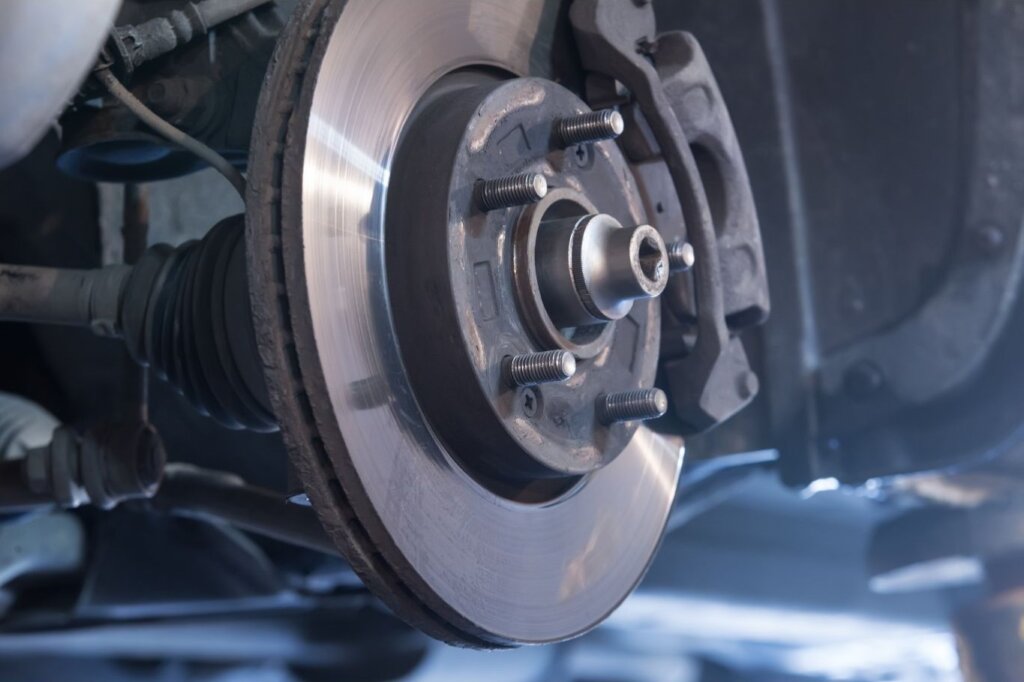As a passionate car enthusiast, I have always been fascinated by the intricate systems that make our vehicles perform optimally. One such crucial component that often goes unnoticed is the disc brakes. Disc brakes play a fundamental role in ensuring our safety on the roads by providing reliable stopping power. In this comprehensive guide, I will delve into the different types of disc brakes, their advantages and disadvantages, factors to consider when choosing the right type, and essential maintenance tips to keep them in top-notch condition.
Why Disc Brakes are Important
Disc brakes are an essential safety feature in modern vehicles, providing superior stopping power compared to traditional drum brakes. Their effectiveness lies in the friction generated between the brake pads and the rotating disc, commonly known as the rotor. This friction converts the kinetic energy of the moving vehicle into heat energy, allowing for controlled deceleration and ultimately bringing the vehicle to a stop. With their ability to dissipate heat quickly, disc brakes offer enhanced performance and significantly reduce the chances of brake fade, a phenomenon where braking efficiency decreases due to excessive heat buildup.
Understanding the Different Types of Disc Brakes
Now that we have established the importance of disc brakes let’s explore the different types available in the market. The most common types of disc brakes are vented, solid, slotted, and drilled. Vented disc brakes consist of two discs separated by cooling fins, allowing for better heat dissipation and preventing brake fade. Solid disc brakes, on the other hand, are a simple design with no cooling fins and are commonly found in smaller vehicles. Slotted disc brakes feature shallow channels or slots on the rotor surface, which help in expelling gases and debris, ensuring consistent braking performance. Lastly, drilled disc brakes have holes drilled into the rotor, offering improved heat dissipation and reducing the overall weight of the braking system.
Advantages and Disadvantages of Each Type
Each type of disc brake has its own set of advantages and disadvantages, and it’s crucial to understand them before making a decision. Vented disc brakes, with their superior heat dissipation capabilities, are ideal for high-performance vehicles or those frequently subjected to heavy braking. However, they may be more expensive to replace compared to solid disc brakes. Solid disc brakes, while simpler in design and cost-effective, are more prone to brake fade due to their limited ability to dissipate heat. Slotted disc brakes offer excellent performance and are less prone to brake fade, but their channels can sometimes accumulate debris, leading to premature wear of the brake pads. Drilled disc brakes, although effective in heat dissipation and reducing weight, can be prone to cracking under extreme stress conditions.
Factors to Consider when Choosing Disc Brakes
Selecting the right type of disc brakes for your vehicle is crucial for optimal performance and safety. Several factors need to be considered before making a decision. Firstly, the vehicle’s intended use and driving conditions play a significant role. If you frequently drive in hilly or mountainous terrains that require frequent braking, vented or slotted disc brakes would be ideal. Secondly, the vehicle’s weight and power also influence the choice of disc brakes. Heavier and more powerful vehicles would benefit from vented disc brakes to handle the increased braking demands. Additionally, budgetary constraints and ease of maintenance should also be taken into account when choosing the type of disc brakes.
Adjusting Disc Brakes for Optimal Performance
Proper adjustment of disc brakes is crucial for their optimal performance and longevity. The adjustment process involves ensuring the brake pads are in proper alignment with the rotor and that there is no excessive play in the system. To adjust the disc brakes, start by loosening the caliper mounting bolts and gently pressing the brake lever until it feels firm. Then, slowly tighten the mounting bolts while maintaining pressure on the brake lever, ensuring the pads are evenly aligned with the rotor. Finally, release the brake lever and check for any rubbing or uneven movement of the rotor. If necessary, repeat the adjustment process until the brakes are perfectly aligned.
Maintenance and Care for Disc Brakes
To ensure the longevity and reliability of your disc brakes, regular maintenance and care are essential. One crucial aspect is keeping the braking system clean and free from debris or contaminants that could impair performance. Regularly inspect the brake pads for wear and replace them when necessary. Additionally, check the rotors for any signs of warping or excessive wear, as these issues can affect braking performance. Lubricating the moving parts of the brake system, such as the caliper slide pins, is also vital to prevent binding and ensure smooth operation. Lastly, bleeding the brake system periodically helps remove any air bubbles or moisture that could compromise braking efficiency.
Common Issues and Troubleshooting Tips
Despite proper maintenance, disc brakes may encounter common issues that require troubleshooting. One such issue is brake noise, often caused by vibration or excessive pad wear. To mitigate noise, ensure the brake pads are seated properly and consider using noise-reducing shims or applying a thin layer of anti-squeal compound. Another common issue is brake pulsation or vibration, which can be a sign of warped rotors. In such cases, having the rotors resurfaced or replaced is necessary to restore smooth braking. Additionally, if you experience a soft or spongy brake pedal, it may indicate air in the brake lines, requiring bleeding to eliminate the air bubbles.
Upgrading to Different Types of Disc Brakes
If you’re considering upgrading your vehicle’s disc brakes, there are a few essential factors to keep in mind. Firstly, ensure compatibility with your vehicle’s existing braking system and suspension setup. Upgrading to a different type of disc brakes may require modifications or adjustments to accommodate the new components. Secondly, consider the intended use of your vehicle and the level of performance you desire. Upgrading to vented or slotted disc brakes can offer significant improvements in braking performance, especially for high-performance or track-oriented vehicles. Lastly, consult with a professional mechanic or brake specialist to ensure a seamless and safe upgrade process.
Conclusion
Disc brakes are a vital component of every vehicle, ensuring our safety on the roads. Understanding the different types of disc brakes, their advantages and disadvantages, and the factors to consider when choosing the right type is crucial for optimal performance and safety. By adjusting and maintaining your disc brakes properly, you can ensure their longevity and reliability. And in case of any issues, troubleshooting techniques can help identify and resolve common problems. Whether you choose to stick with the existing disc brakes or upgrade to a different type, always prioritize safety and consult with professionals when necessary. Remember, well-maintained and properly functioning disc brakes are essential for a smooth and secure driving experience.





